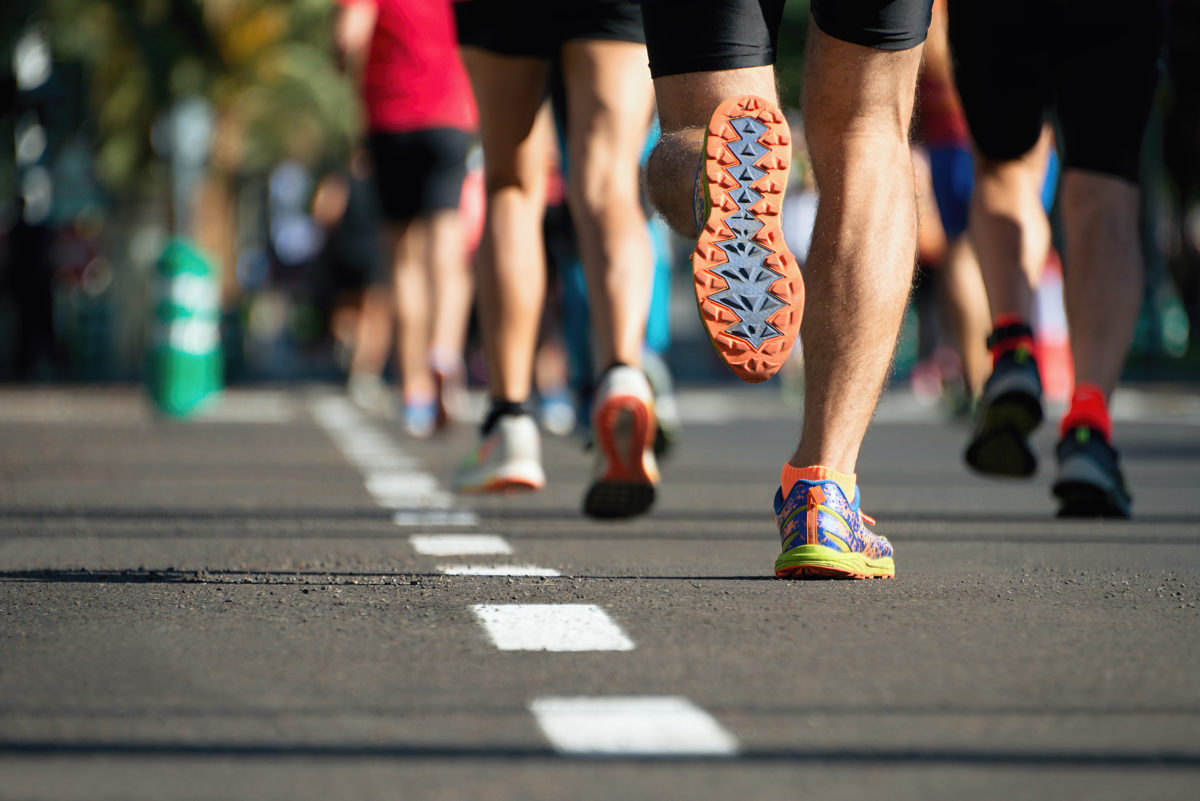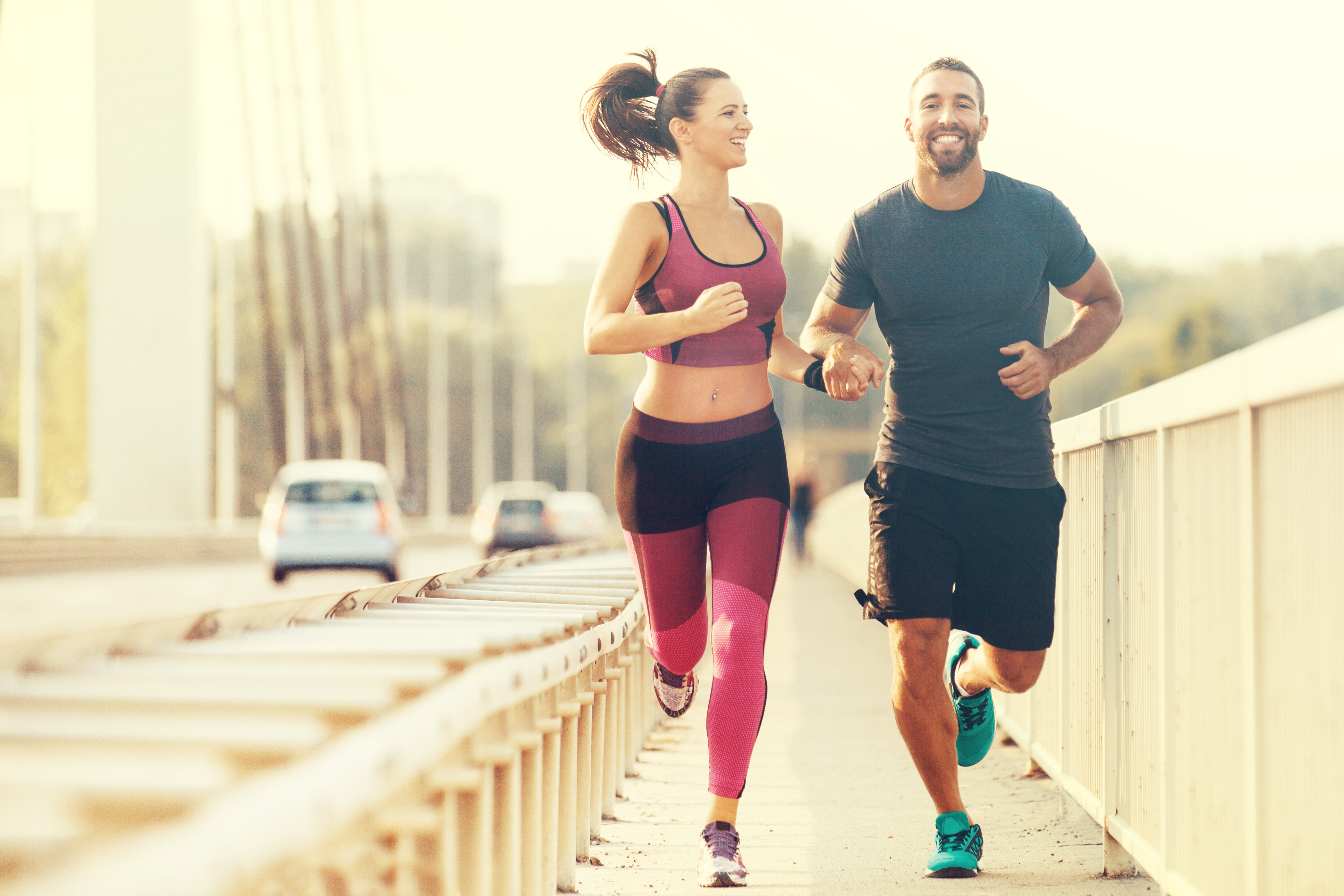
You’ve decided to enter your first triathlon, and now you’re wondering what equipment you actually need for it, right? Because a triathlon involves three different sports in one event, you’ll need to brace yourself for the fact that it will be demanding, and that you will need to get hold of the appropriate equipment, too. But you don’t need to buy everything that’s out there—not by a long stretch. We reveal what you really need for your first triathlon.
Your first time in a triathlon
First and foremost, in your first triathlon the most important thing is to reach the finishing line. You’ll have to familiarize yourself with the whole process for a start, and that demands a certain amount of effort in itself. Most athletes who do a triathlon once go on to do it several times. But you should only buy the complete range of triathlon equipment when you’re certain that triathlons really are your thing. When you’re starting out, the following equipment should be adequate.
Swimming—What you need for a triathlon
Since you will most likely only swim a relatively short distance in your first triathlon—usually somewhere between 500 and 800 meters—it’s enough when you’re starting out if you have a swimsuit or swimming trunks, a swim cap, and goggles. If you’re going to be swimming more than 500 meters and the water you have to swim in is going to be particularly cold, you should also consider getting a wetsuit. More often than not, though, you won’t need anything like that for your first triathlon. It’s best to find out in advance how cold the water will be. Then you can decide whether or not you need a wetsuit from the word go. In addition, wetsuits are only allowed if the water temperature is below 22 degrees, anyway. When it comes to a swim cap, you will usually be given one by the triathlon organizer at the event itself. But you should still get yourself one for your triathlon training. That way, you can get used to wearing a swim cap ahead of the event. When choosing what material your swim cap should be, always make sure you go for a silicone one.
Cycling—What you need for a triathlon
The distance you cover on your bike will be the longest you have to do in the triathlon. So it’s definitely a good idea to get yourself a racing bike at some point. In principle, however, you can take part in a triathlon using virtually any bike you like. Nevertheless, over a long distance you’ll definitely notice that you can cover ground more easily on a racing bike than on a normal bike. But when you’re starting out, the normal bike that you’re already using will be sufficient. In addition to the bike itself, you’ll also need the following items to make sure you’re kitted out for a triathlon:
- Bike helmet: You can’t take part in a triathlon without one. When you’re buying your helmet, make sure it has been tested and awarded the seal of approval, and that it really fits properly and sits securely, too.
- Cycling clothes: These include a cycling jersey, cycling shorts, and cycling gloves. Specialist cycling shorts are needed because they include a padded behind, making long rides more comfortable. A specialist cycling jersey, on the other hand, is not something you actually need when you’re starting out. Yet it can have its advantages—after all, cycling jerseys have a collar, for example, which protects your neck from excessive wind. So it’s worth considering getting one. Cycling gloves protect your hands—from calluses, as well as from injury if you fall off.
- Cycling shoes: These depend on what kind of bike you ride and what pedals it has. If you have clipless pedals, then you’ll need special cycling shoes with a cleat that locks into the pedals. Apart from that, you should also make sure that your cycling shoes are quick to take on and off. A velcro fastening is particularly good for this—and it’s what most triathletes opt for.
- Drinking bottle: So you can drink fluids while you’re cycling, too.
If you decide to get yourself a racing bike at some point for triathlons, there are a few points worth bearing in mind:
- Frame size
- Type of brakes
- Material
- Choice of individual components
- Saddle
It’s best to get professional advice with this.

Running—What you need for a triathlon
Anyone who runs regularly and is comfortable running the distance in a triathlon will actually already have everything at home that they need for running. First there are the running shoes. Given the distance you’ll be running in your running shoes, you need to be sure the fit and quality are just right, so you’ll need to go to a specialist store for these. If you don’t want to buy separate cycling shoes when you’re starting out, you can use your running shoes for cycling, too. This will also save you having to change your shoes as, in a triathlon, the cycling race is followed by the running race. If you run, then running clothes are another thing you probably have already. If you don’t have separate running socks, it may be worth getting some. They can reduce the risk of you suffering from chafing and blisters. Of course, there is another way you can protect yourself against blisters and sore patches. You can simply wear normal socks and use our pjuractive 2SKIN, too.
Additional equipment for a triathlon
In addition to the equipment above, it may also be worth getting some sunglasses that you can wear while you’re running and cycling. You’ll also need to wear sun cream to protect yourself from the sun. A cap can also be a good idea to reduce some of the glare from the sun. In addition, a heart rate monitor can help you monitor your performance better and a speedometer for your bike will tell you precisely how far you have left to ride and also how fast you’re going.
Essentially, you don’t need a huge amount of equipment for your first triathlon. Things are a little different when it comes to triathlon training, on the other hand. It’s important here to draw up a training plan and stick to it for several weeks—or even months. In our next article, we let you in on the secrets of what your training for your first triathlon should look like.